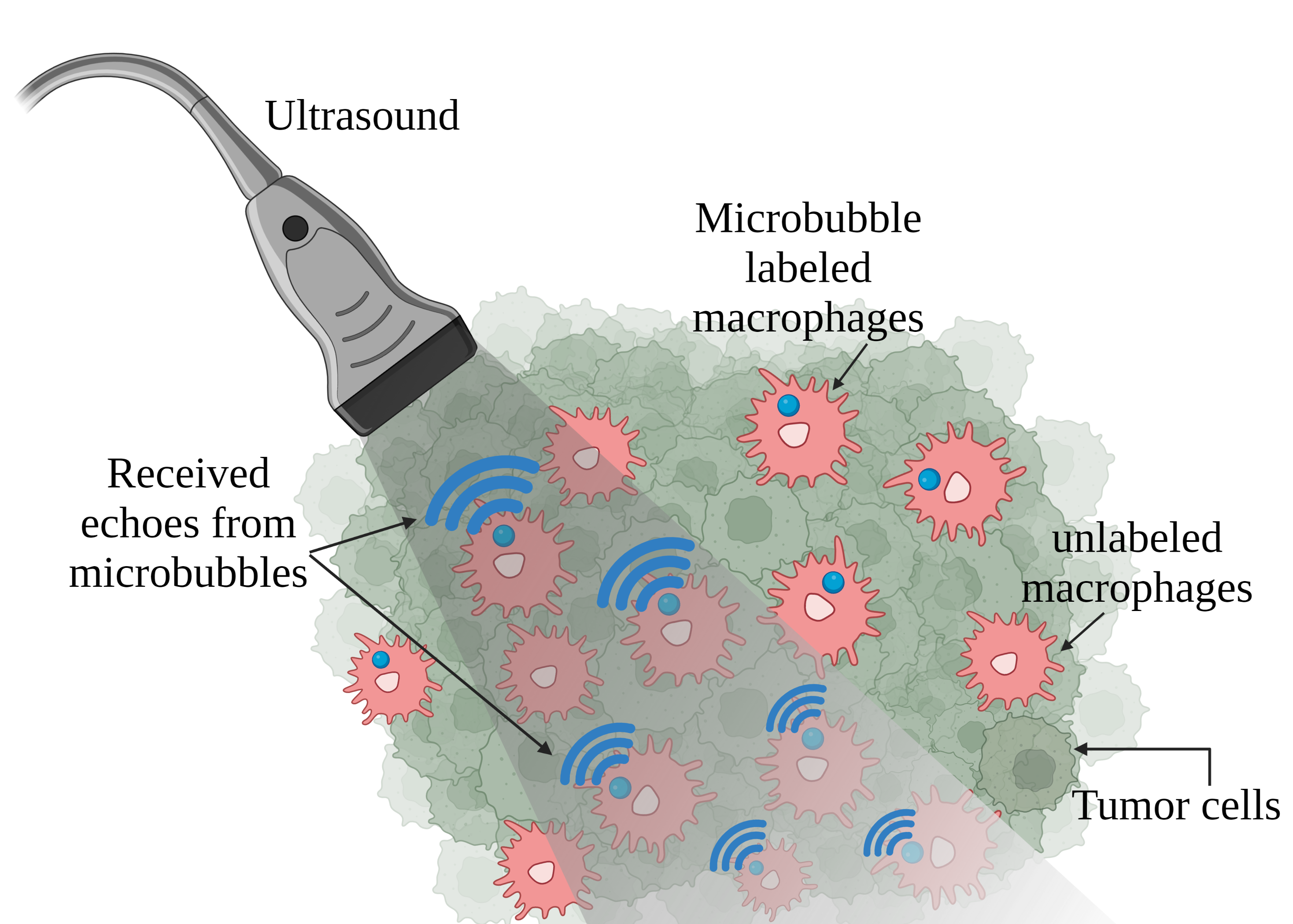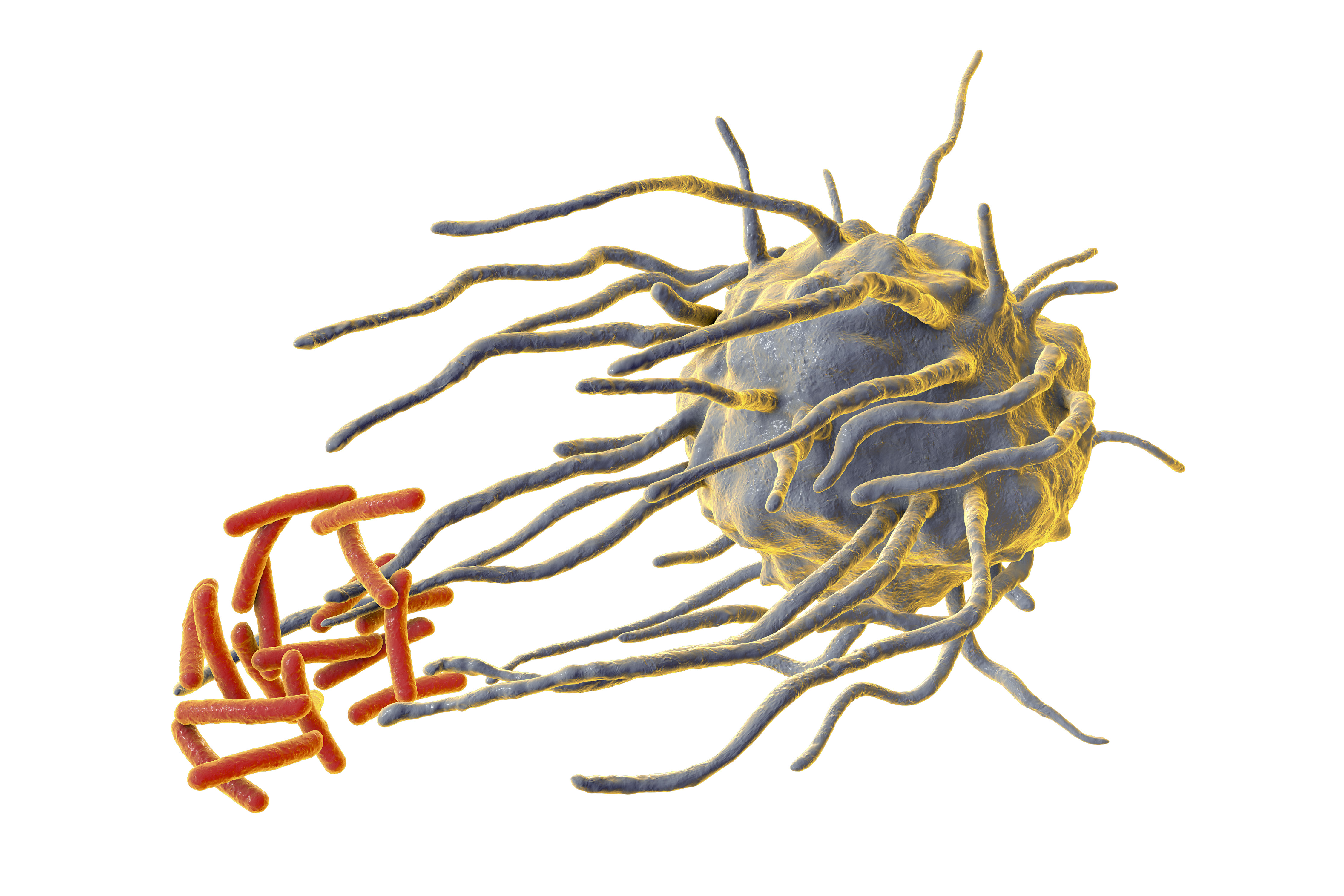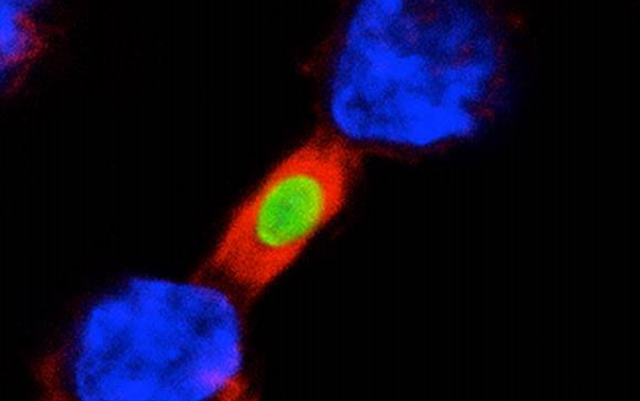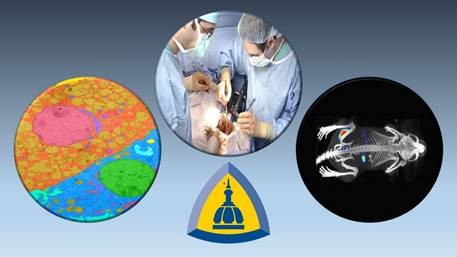UCLA scientists have identified the protein GPNMB as a critical regulator in the heart’s healing process after a heart attack.
Tag: Macrophages
Novel Study Reveals How Aging Immune System Fuels Cancer Growth, Potentially Opening New Avenues for Prevention
A novel study by researchers at the Icahn School of Medicine at Mount Sinai addresses a critical yet under-explored question in cancer research: Why is aging the biggest risk factor for cancer? The study reveals how an aging immune system spurs tumor growth, offering new insights into cancer prevention and treatment, especially for older adults.
Microrobot-packed pill shows promise for treating inflammatory bowel disease in mice
Engineers at the University of California San Diego have developed a pill that releases microscopic robots, or microrobots, into the colon to treat inflammatory bowel disease (IBD). The experimental treatment, given orally, has shown success in mice.
Obesity-cancer connection discovery suggests strategies for improving immunotherapy
The study reported in the journal Nature provides a mechanistic explanation for the “obesity paradox” — that obesity can contribute to cancer progression but also improve response to immunotherapy.
Effects of interleukin-10 treated macrophages on bone marrow mesenchymal stem cells via signal transducer and activator of transcription 3 pathway
BACKGROUNDAlveolar bone defects caused by inflammation are an urgent issue in oral implant surgery that must be solved. Regulating the various phenotypes of macrophages to enhance the inflammatory environment can significantly affect the pr
Interplay between mesenchymal stem cells and macrophages: Promoting bone tissue repair
The repair of bone tissue damage is a complex process that is well-orchestrated in time and space, a focus and difficulty in orthopedic treatment. In recent years, the success of mesenchymal stem cells (MSCs)-mediated bone repair in clinica
Scientists discover hidden army of lung flu fighters
Scientists have long thought of the fluid-filled sac around our lungs merely as a cushion from external damage.

Microbubble Macrophages Track Tumors #ASA184
At the 184th ASA Meeting, Ashley Alva of the Georgia Institute of Technology will describe how attaching microbubbles to macrophages, a type of white blood cell, can create high-resolution and sensitive tracking images useful for disease diagnosis. Because of the attached microbubbles, the cells sent back an echo when hit with ultrasound, which is nonionizing and noninvasive and has great depth of penetration. This allowed the team to visualize the macrophages in vivo with high resolution and sensitivity. Visualizing macrophages in vivo could also provide a powerful tool for understanding immune responses and monitoring therapeutic efficacy.
Cedars-Sinai Investigators ID Gene Critical to Human Immune Response
Cedars-Sinai investigators have identified a gene that plays an essential role in the innate human immune system. The gene, NLRP11, helps activate the inflammatory response that tells the body’s white blood cells to go on the attack against a foreign presence.
Uncovering new details of the brain’s first line of defense
Thanks to over a century of modern neuroscience, we have made significant strides in our understanding of the brain.
Study identifies potential target for treating systemic inflammation in obesity
Researchers studying the enzyme DHPS have determined that blocking its activity in mouse macrophages leads to a reduction in proteins that drive inflammation during obesity, leading to improved glycemic control.
Kidney Resident Macrophages Share Properties across Species, May Lead to Targeted Treatment for Kidney Diseases
Article title: Kidney resident macrophages in the rat have minimal turnover and replacement by blood monocytes Authors: Kurt A. Zimmerman, Zhengqin Yang, Jeremie M. Lever, Zhang Li, Mandy J. Croyle, Anupam Agarwal, Bradley K. Yoder, James F. George From the…
‘Fortunate Accident’ May Yield Immunity Weapon Against Antibiotic-Resistant Bacteria
In what turned out to be one of the most important accidents of all time, Scottish bacteriologist Alexander Fleming returned to his laboratory after a vacation in 1928 to find a clear zone surrounding a piece of mold that had infiltrated a petri dish full of Staphylococcus aureus (S. aureus), a common skin bacterium he was growing.
Trojan horses and tunneling nanotubes: Ebola virus research at Texas Biomed gets NIH funding boost
Scientists have a general idea of how viruses invade and spread in the body, but the precise mechanisms are actually not well understood, especially when it comes to Ebola virus. Olena Shtanko, Ph.D., a Staff Scientist at the Texas Biomedical Research Institute (Texas Biomed), has received more than $1 million from the National Institutes of Health (NIH) to explore different aspects of Ebola virus infection.
Study Explores Regulatory Role for White Blood Cells in Recruitment of Brown Fat
Article title: Thermogenic recruitment of brown and brite/beige adipose tissues is not obligatorily associated with macrophage accretion or attrition Authors: Nathalie Boulet, Ineke H.N. Luijten, Barbara Cannon, Jan Nedergaard From the authors: “A regulatory or mediatory role—positive or negative—for macrophages…

Immune System Killer Cells Controlled by Circadian Rhythms
Macrophages, the killer cells of the immune system, are controlled by circadian rhythms, a finding which may indicate that our ability to fight disease relies more heavily on daily circadian cycles than previously assumed.
New technology tracks role of macrophages in cancer spread
A Morgridge imaging study of macrophages — immune cells that are important to human health, but paradoxically can help some cancers grow and spread — is offering better ways to understand these cells and target them with immunotherapies.

Protein that Keeps Immune System from Freaking Out Could Form Basis for New Therapeutics
Treatment with a peptide that mimics the naturally occurring protein GIV prevents immune overreaction and supports a mechanism critical for survival in mouse models of sepsis and colitis, according to a UC San Diego study.

Research News Tip Sheet: Story Ideas from Johns Hopkins Medicine
During the COVID-19 pandemic, Johns Hopkins Medicine Media Relations is focused on disseminating current, accurate and useful information to the public via the media. As part of that effort, we are distributing our “COVID-19 Tip Sheet: Story Ideas from Johns Hopkins” every Tuesday throughout the duration of the outbreak.
Researchers Identify a Protein That Is Critical for Wound Healing after a Central Nervous System Injury
after a Central Nervous System Injury
(New York – March 2, 2020) Plexin-B2, an axon guidance protein in the central nervous system (CNS), plays an important role in wound healing and neural repair following spinal cord injury (SCI), according to research conducted at the Icahn School of Medicine at Mount Sinai and published today in Nature Neuroscience.
UC San Diego Researchers Convert Pro-Tumor Macrophages into Cancer Killers
University of California San Diego School of Medicine researchers identified a new therapeutic approach in mouse models that halts drug resistance and cancer progression by using an antibody that induces the immune system via macrophages to seek and kill cancer cells.